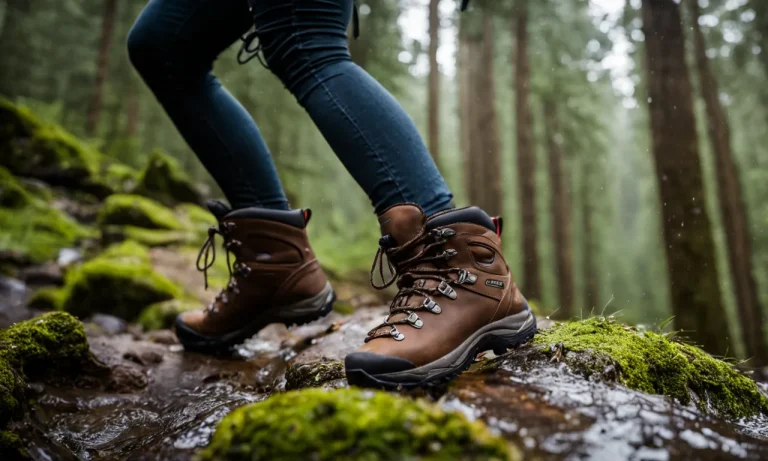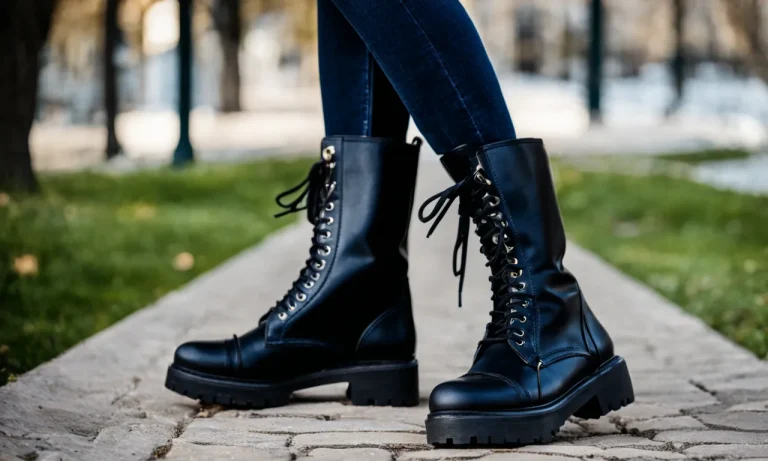Finding the right sandal size can be tricky, especially when it comes to converting your regular shoe size. With summer right around the corner, you’ll want to make sure your feet are happy and comfortable in your new sandals.
If you’re short on time, here’s a quick answer to your question: Your sandal size is usually about 1/2 size larger than your regular shoe size. This is because sandals are open-toed and don’t confine your feet like closed shoes.
Going up 1/2 size allows a little extra room for your feet to spread out.
In this comprehensive guide, we’ll cover everything you need to know about sandal sizing compared to your typical shoe size. You’ll learn key factors that affect fit like toe shape, arch height, and measuring methods.
We’ll also provide size charts and tips for getting an accurate measurement at home.
How Sandal Size Differs from Shoe Size
When it comes to finding the perfect fit for your feet, understanding the differences between sandal size and shoe size is essential. While both types of footwear serve the purpose of protecting and supporting your feet, there are several factors that set them apart.
More room for toes to spread out
Sandals are designed to provide your feet with more freedom and space compared to regular shoes. This is particularly noticeable in the toe area. Sandals typically have an open toe design, allowing your toes to spread out naturally.
This design feature is not only more comfortable but also helps to prevent issues such as blisters and corns. It’s important to consider this when determining your sandal size, as you may require a slightly larger size than your regular shoe size.
High arch vs low arch feet
An important consideration when it comes to sandal size is the arch of your foot. People with high arches tend to have a larger arch height, requiring more support in their footwear. Sandals often have minimal arch support compared to shoes, so individuals with high arches may need to look for sandals that offer additional arch support or consider using orthotic inserts.
On the other hand, those with low arches may find that sandals provide the perfect amount of support and comfort for their feet.
Narrow vs wide feet
Another factor that can affect sandal size is the width of your feet. Just like with regular shoes, sandals come in various widths to accommodate different foot shapes. If you have narrow feet, you may find that certain sandal styles are too wide and do not provide a secure fit.
Conversely, individuals with wider feet may need to look for sandals that offer a wider fit option to ensure comfort and proper support.
When it comes to finding the perfect sandal size, it’s important to take into account these differences from regular shoe sizes. It’s recommended to try on different styles and sizes to find the best fit for your feet.
Remember, comfort is key when it comes to footwear, so don’t hesitate to explore different options and consult with footwear experts if needed.
How to Measure Your Feet for Sandals
Using a Brannock device
If you want to ensure the most accurate measurements for your feet, using a Brannock device is highly recommended. These devices, commonly found in shoe stores, provide precise measurements of both length and width.
Simply slide your foot into the device and adjust the sliders until they fit comfortably against your foot. The measurements will be displayed on the device, allowing you to choose the perfect sandal size based on these measurements.
Remember, different brands may have slightly different sizing, so it’s always a good idea to consult the brand’s size chart as well.
DIY measuring at home
If you don’t have access to a Brannock device, don’t worry! You can still measure your feet accurately at home. All you need is a ruler or a measuring tape. Start by placing your foot on a piece of paper, making sure your heel is touching the edge.
Then, mark the tip of your longest toe and the back of your heel on the paper. Measure the distance between these two points in inches or centimeters. This will give you the length of your foot. To measure the width, place the ruler or measuring tape across the widest part of your foot and note the measurement.
Keep in mind that it’s always a good idea to measure both feet, as they may be slightly different in size.
Trace your foot on paper
Another simple method to measure your feet is by tracing them on a piece of paper. Place a blank sheet of paper on the floor and stand on it with your weight evenly distributed. Hold a pen or a pencil perpendicular to the paper and trace the outline of your foot.
Once you have the outline, measure the length from the tip of your longest toe to the back of your heel, and the width at the widest part of your foot. This method can be especially useful if you’re ordering sandals online and need to provide accurate measurements.
Measure foot length and width
Regardless of the method you choose, it’s important to measure both the length and width of your feet. This will ensure that you find a sandal that fits comfortably without being too tight or too loose.
Remember that different shoe brands may have slightly different sizing, so it’s always a good idea to consult the brand’s size chart. If you’re ordering online, most websites provide detailed instructions on how to measure your feet and choose the right size.
Don’t forget to take into account any specific foot conditions you may have, such as bunions or hammertoes, as they may require additional considerations when selecting the perfect sandal.
Sandal Size Charts for Major Brands
Women’s size chart
When it comes to finding the perfect fit for women’s sandals, it’s important to consult the size chart provided by the brand. Each brand may have its own specific sizing guidelines, so it’s crucial to take accurate measurements of your feet and compare them with the brand’s size chart.
Most brands provide a chart that includes foot length and corresponding shoe size. It’s recommended to measure your feet at the end of the day when they are slightly swollen to ensure a comfortable fit throughout the day.
For example, Brand X may have a size chart that suggests a size 8 for a foot length of 9.5 inches, while Brand Y might recommend a size 8.5 for the same foot length. It’s important to note that these size charts may vary, so it’s always a good idea to refer to the brand’s official website or visit a store to try on different sizes before making a purchase.
Men’s size chart
Just like with women’s sandals, men’s sandals also come in various sizes, and each brand may have its own size chart. Men’s sandals usually have a broader fit compared to women’s sandals. It’s important to measure both the length and width of your foot to ensure a comfortable fit.
For example, Brand A might suggest a size 10 for a foot length of 10.5 inches and a width of D (average width), while Brand B may recommend a size 10.5 for the same foot length but with an E (wide) width. It’s crucial to take these factors into consideration when selecting the right sandal size.
Unisex/kids size chart
Unisex and kids’ sandals often have their own specific size chart, which is different from the size charts for men and women. It’s important to refer to the brand’s size chart to find the right fit for unisex and kids’ sandals.
These size charts usually include foot length, but they may also take into account other factors such as age or shoe width.
For instance, Brand C may suggest a size 5 for a foot length of 6 inches for a child aged 3-4 years, while Brand D might recommend a size 6 for the same foot length but for a child aged 5-6 years. It’s crucial to follow the brand’s guidelines and measure your child’s feet accurately to ensure a comfortable and proper fit.
Remember, it’s always best to refer to the brand’s official website or visit a store to try on different sizes before making a final decision. Taking accurate measurements and consulting the brand’s size chart will help you find the perfect fit for your sandals, ensuring both comfort and style.
Tips for Finding the Perfect Sandal Fit
Stand up when trying on
When trying on sandals, it’s important to stand up to get an accurate feel for the fit. This is because our feet tend to spread out and flatten when we stand, which can affect the size and fit of the sandals.
By standing up, you can ensure that the sandals are not too tight or too loose when you’re in an upright position.
Shop late in the day when feet are most swollen
Did you know that our feet tend to swell throughout the day? That’s why it’s recommended to shop for sandals in the late afternoon or evening, when your feet are at their largest. By doing so, you can avoid buying sandals that are too tight and uncomfortable.
Remember, it’s better to have a slightly roomier fit than to squeeze your feet into sandals that are too small.
Wiggle toes to test roominess
When trying on sandals, don’t forget to wiggle your toes! This simple test can give you a good indication of the roominess of the sandals. Ideally, you should be able to wiggle your toes comfortably without feeling any pinching or tightness.
If your toes feel cramped or restricted, it’s a sign that the sandals may be too small and you should consider trying a larger size.
Walk around the store to break them in
It’s important to break in your new sandals before wearing them for long periods of time. One way to do this is by walking around the store for a few minutes while wearing the sandals. This will help you determine if they are comfortable and if there are any areas that rub or cause discomfort.
If you experience any pain or discomfort, it’s a sign that the sandals may not be the right fit for you.
Consider custom orthotic inserts
If you have specific foot conditions or require additional support, consider using custom orthotic inserts in your sandals. These inserts can provide extra cushioning, arch support, and alignment for your feet. They can also help improve the overall fit and comfort of your sandals.
Consult with a podiatrist or orthopedic specialist to determine if custom orthotic inserts are right for you.
Conclusion
We hope this outline gives you a detailed overview of how sandal sizing differs from regular shoe sizes. While your sandal size is usually about 1/2 size up, every foot is unique. Pay attention to toe shape, arch type and width when selecting the perfect sandal fit.
Don’t forget to measure feet correctly either with a device or DIY methods at home for maximum accuracy and comfort. With the right size sandals this summer, you’ll be ready to hit the beach, pool or park in style.






